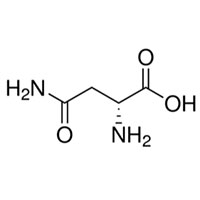Synonyms
D-Asparagine
H-D-Asn-OH·H2O
D-b-Asparagine
EINECS 218-163-3
Asparagine, DL-
H-D-Asn-OH.H2O
Aspartic Acid b-Amide
2-Aminosuccinamic acid
H-D-Asn-OH
(R)-2,4-Diamino-4-oxobutanoic acid
a-Aminosuccinamic acid
(2R)-2,4-diamino-4-oxobutanoic acid
Asparagine D-form
Product Description
D-Asparagine is a non-essential amino acid that is widely used in the pharmaceutical industry for
various applications. In this product analysis, we will discuss the medical uses, upstream and
downstream of D-Asparagine, market trends, and chemical suppliers' perspectives.
Medical Uses:
D-Asparagine is commonly used as a nutritional supplement for patients suffering from chronic kidney
disease, as it can help to maintain proper nitrogen balance in the body. It is also used in the
formulation of parenteral nutrition products for individuals who cannot consume food orally. Moreover,
D-Asparagine has also been studied for its potential therapeutic applications in treating neurological
disorders and cancer.
Upstream and Downstream:
The production of D-Asparagine usually starts from L-Asparagine, which is converted to D-Asparagine by
the action of specific enzymes. The upstream materials required for its production include L-Asparagine,
enzymes, and other chemicals. The downstream products include pharmaceutical intermediates, parenteral
nutrition products, and other nutraceutical products.
Market Trends:
The global market for D-Asparagine is expected to grow significantly in the coming years due to the
increasing demand for parenteral nutrition products and dietary supplements. The pharmaceutical industry
is the largest consumer of D-Asparagine, and the demand for this amino acid is driven by the increasing
prevalence of chronic kidney disease and cancer. In addition, the use of D-Asparagine in the food and
beverage industry is also expected to increase due to its potential benefits as a natural flavor
enhancer.
Chemical Suppliers' Perspectives:
There are several chemical suppliers of D-Asparagine worldwide, including Ajinomoto Co. Inc., Kyowa
Hakko Bio Co. Ltd., and Sigma-Aldrich Co. LLC. These suppliers offer D-Asparagine in different grades
and quantities to meet the diverse needs of their customers. They also provide technical support and
custom synthesis services to their clients, ensuring that their products meet the highest quality
standards.
In conclusion, D-Asparagine is a versatile amino acid that has various applications in the
pharmaceutical, nutraceutical, and food industries. As the demand for parenteral nutrition products and
dietary supplements increases, the market for D-Asparagine is expected to grow, presenting opportunities
for chemical suppliers and manufacturers.





